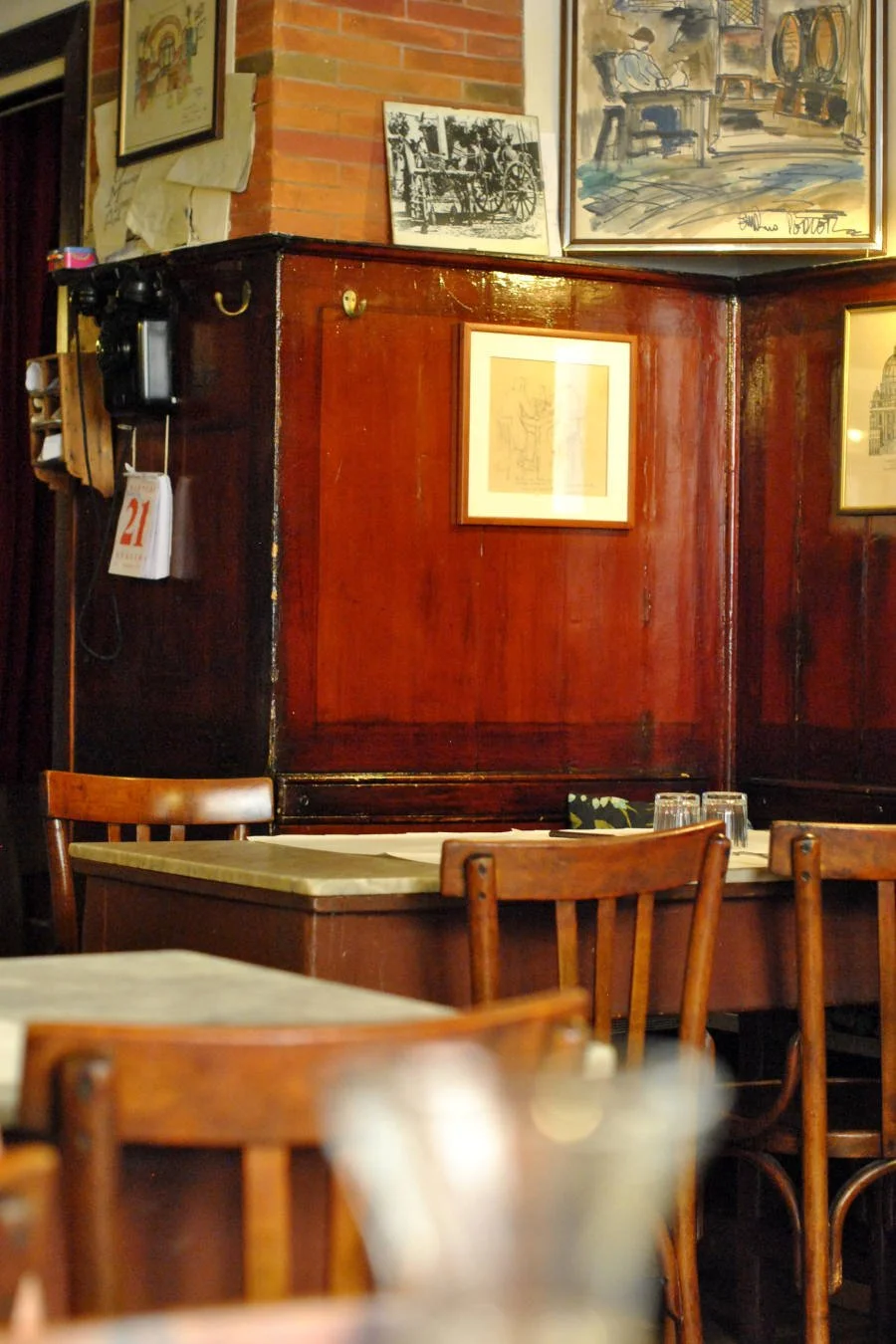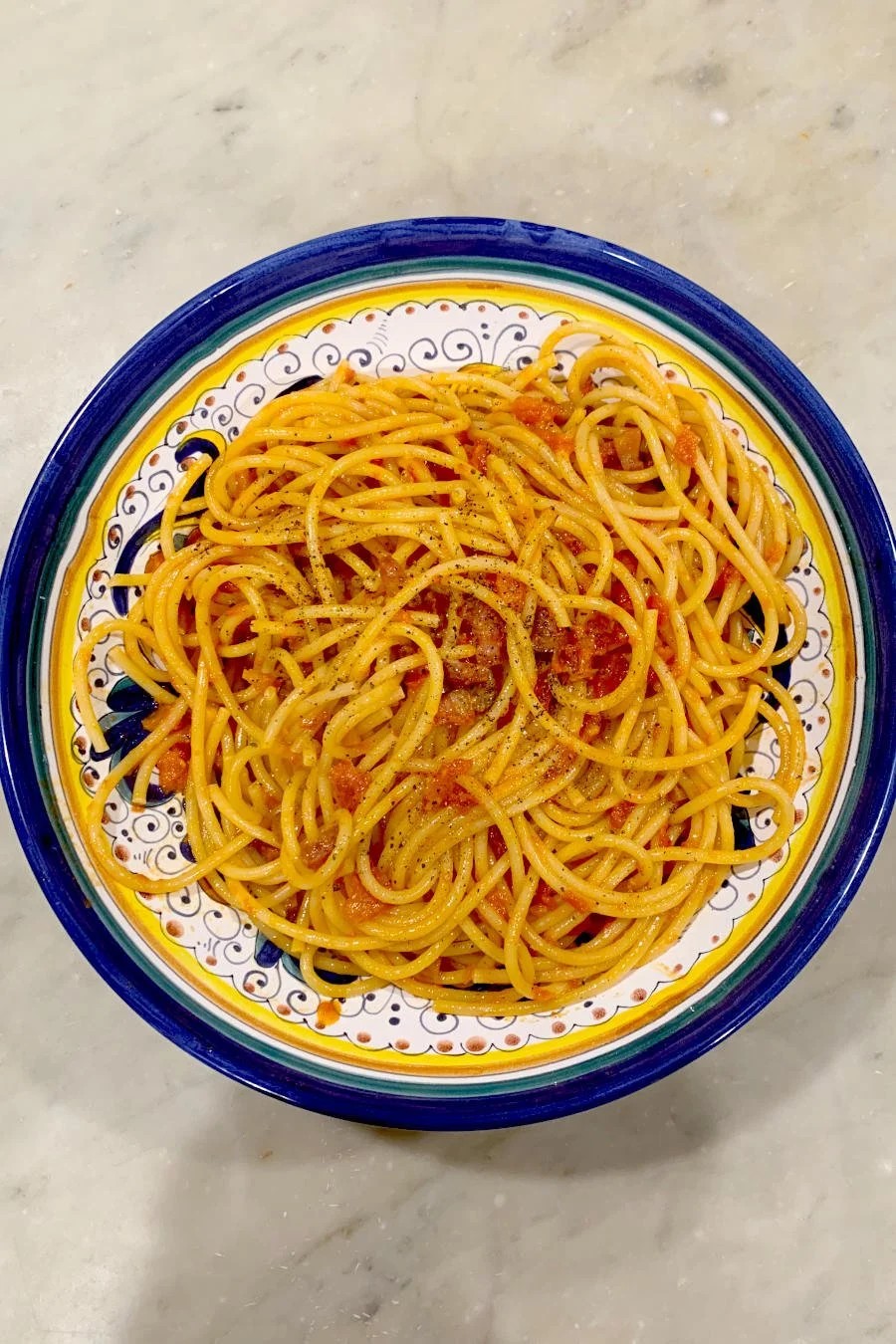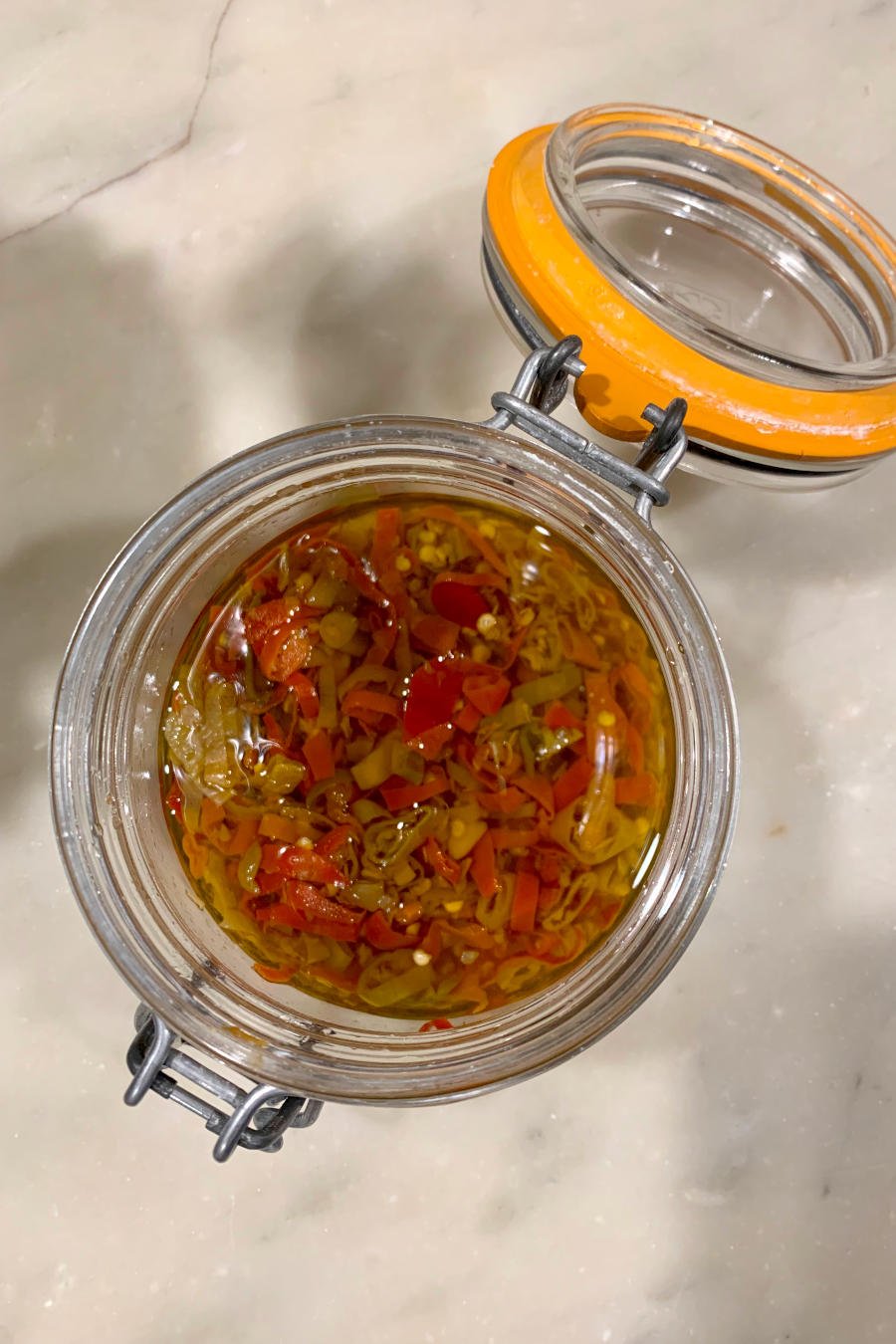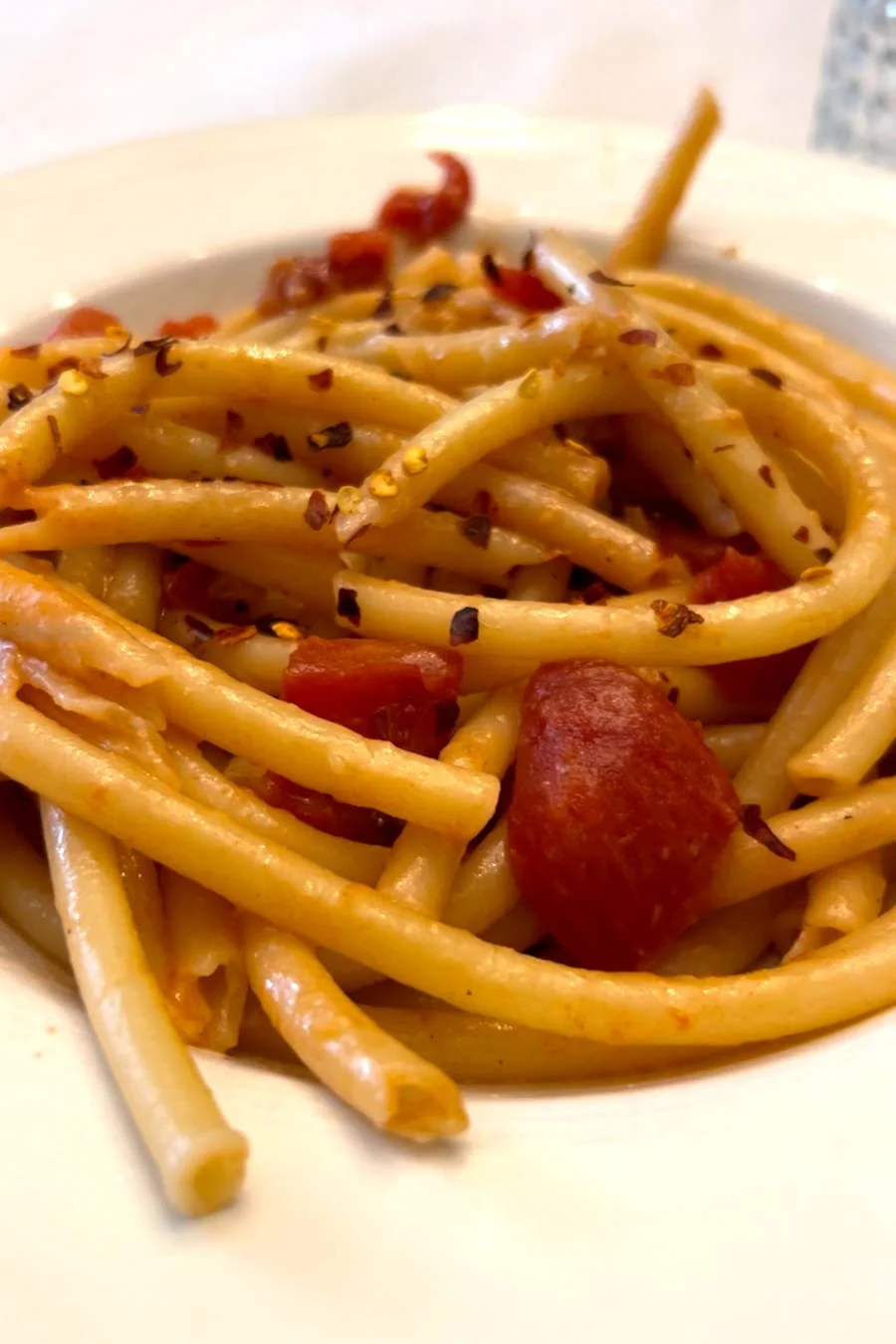From Rome to Home: Pasta all’Amatriciana
At the Table
Golden light glows from antique brass sconces hung on the wall. Wooden chairs surround small, wooden tables. Forks make music as they clank against white dinner plates. The Italian language rises and falls like music in the background as friends retell what’s happening in their lives.
Laughter erupts.
Feelings are expressed.
All this magic happens around the table. Food brings it all together. The food isn’t elaborate or fanciful. It’s simple food. It’s good food.
Cucina Povera
Central and Southern Italy are the home of cucina povera. This poor cooking was created out of necessity. When you don’t have much, you learn to be creative and use what you have. The Italian people mastered this. In fact, this style of frugally preparing food became a philosophy of cooking in Italy.
Throughout history, much of la cucina povera included carbs like bread, pasta, or polenta. All of which were more affordable food choices. Meat was expensive. The choice had to be the less popular cuts or the offal that the rich and elite refused to eat.
What started out as a necessity became a tradition. La cucina povera is found all over Italy and many Roman dishes are prepared in this particular style of cooking.
La Matriciana
My favorite Roman pasta was birthed out of this movement. Pasta all’Amatriciana. Or, if you’re from Rome, you speak Romanesco and call it La Matriciana. No matter what you call it, it’s amazingly simple and amazingly delicious.
Walk into any traditional Roman restaurant in Trastevere or any other Roman neighborhood, and you are sure to find Pasta all’Amatriciana on the menu. The type of pasta will often vary. Classic bucatini or spaghetti. Penne. Or, my favorite: mezze maniche.
The type of pasta is less important. What is important is that the pasta is made with a tomato-based sauce that has a hint of pepperoncini (spicy red peppers) and rendered guanciale. Guanciale (pork jowel) gives the dish so much flavor. Grated Pecorino Romano cheese balances out the acidity of the tomatoes and adds just a touch of tanginess to finish the dish.
Pasta all’Amatriciana is one of the four, fabulous and classic Roman pastas. La Carbonara, Cacio e Pepe, and La Gricia are the other three. Each pasta dish deserves its own write up.
Simple Sauce
What I love about La Matriciana is that it’s hearty enough to fill you up. Yet, it’s light enough to eat on a warm, summer day. I love the combination of saltiness and tanginess. And I love the spice. It pairs well with a white wine like Pinot Grigio.
I also love the simplicity of this sauce. It’s easy to make. You can pair so many different types of pasta—short or long pastas. And you don’t need to have many ingredients on hand to be able to prepare a delicious meal.
When I lived in Rome, I would often order La Matriciana at our favorite trattoria. It’s a classic for a reason. On average, I usually make La Matriciana at home about once a week.
Now, you can too. I don’t use onions in my recipe and I only use a touch of black pepper. I love the heat, so I make sure to add plenty of my homemade pepperoncini to my plate.
I hope you enjoy the recipe. As always, if you do, I would love if you would give the recipe a good rating as well as a review.
Buon Appetito!
xx Sommer
Pepperoncini Piccanti Recipe:
While wearing plastic gloves, slice small red peppers into thin strips.
Run the sliced peppers under water in a colander, removing some of the seeds.
Dry the peppers with paper towels and place in a bowl and cover abundantly with fine sea salt.
Cover the bowl with plastic wrap and let rest for about 24 hours.
Rinse the peppers again in a colander and dry well with a paper towel.
Place the peppers in a sterilized jar with 1 tsp of vinegar and cover with extra virgin olive oil. Make sure the peppers are completely covered in the oil by pressing down the peppers with a fork.
*unopened, keep at room temperature up to 1 year.
Pasta all'Amatriciana
yield: 5 prep time: 10 MINUTES cook time: 15 MINUTES total time: 25 MINUTES
Pasta all'Amatriciana is one of the fabulous and classic, four Roman pastas. Made with a tomato-based sauce, rendered guanciale, and spicy pepperonicini. Grated Pecorino Romano cheese balances out the acidity of the tomatoes and adds just a touch of tanginess to finish the dish.
Ingredients
4 oz cubed guanciale
14 oz tomato passata (or can of peeled tomatoes with juice)
1-2 cloves garlic, peeled and minced
4 oz white wine
1 oz grated Pecorino Romano cheese
Pepperoncini (or red pepper flakes) to taste
Salt and pepper to taste
500 g pasta of your choice
Instructions
Bring a large pot of water to boiling. Add fine sea salt to the water and add your pasta of choice to the water.
Meanwhile, in a large skillet on medium heat, drizzle with a touch of olive oil. Add the cubed guanciale to the pan and stir occasionally with a wooden spoon until the guanciale is crispy. Remove the guanciale and place in a small bowl and set aside. This step is important if you want a crispier guanciale that has a bite to it.
Turn down the heat on your pan to low and add the minced garlic. Brown slightly and add the white wine to deglaze the pan. Let the wine evaporate for 1-2 minutes.
Add the tomato passata. (If you're using tomatoes rather than passata, be sure to crush the tomatoes with your spoon as they cook to create a thicker sauce.) Let the sauce thicken for about 5 minutes.
Add the al dente pasta to the sauce, reserving the pasta water. Add the guanciale to the pan and stir all together. If you need more liquid for the sauce, add ¼ cup of pasta water at a time. Turn the heat off of the pan and stir in the grated cheese.
Salt, pepper, and add pepperoncini to taste.
Notes
If you're in a pinch and can't find guanciale, you can substitute with pancetta. But the guanciale makes it so much better.
If I'm making this dish for kids, I like to let each person add the pepperoncini to their individual pasta bowl rather than adding it to the serving dish. Most people have a very different heat tolerance — especially kids.






